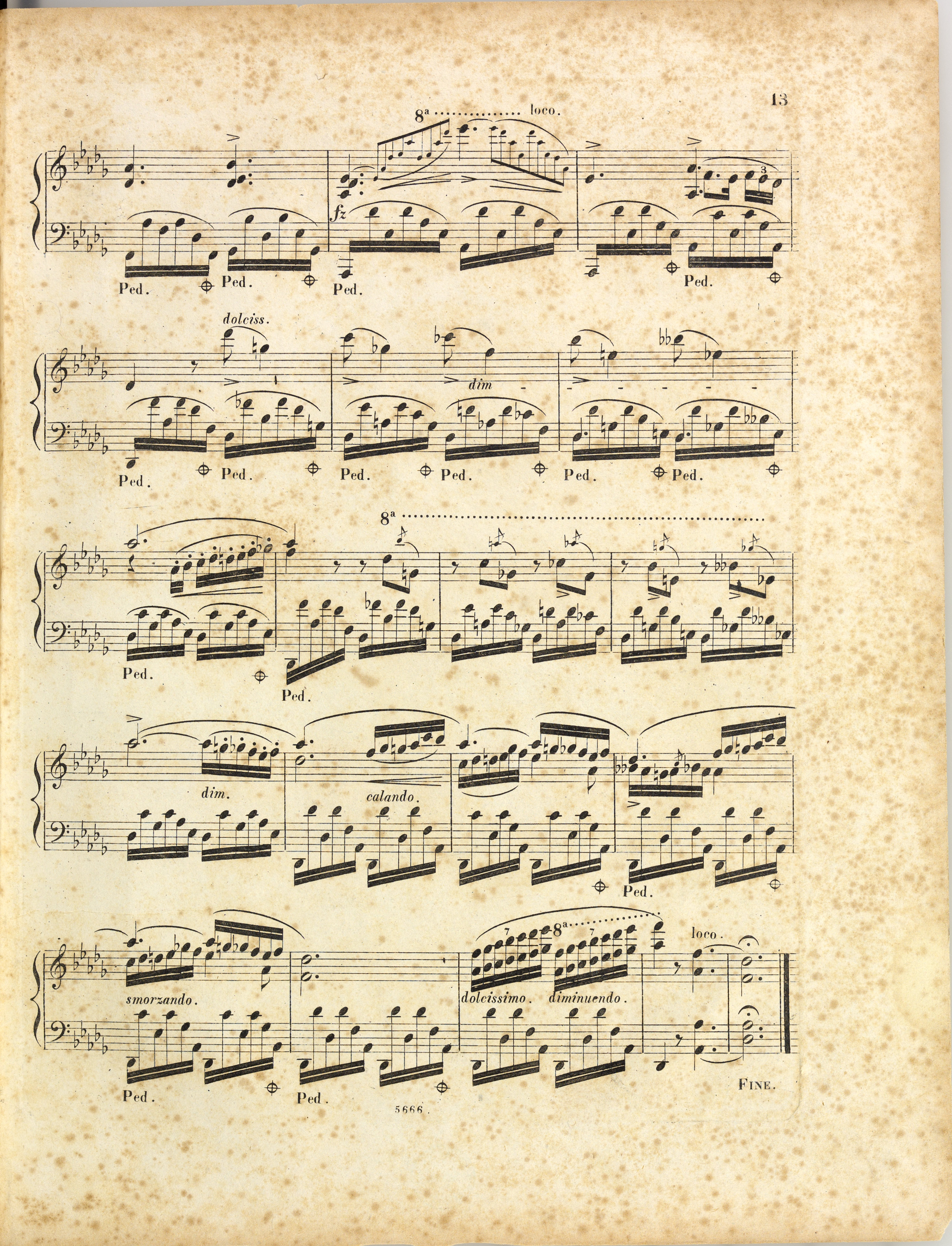



The traces of changing bass notes that can be seen in A for particular figures of the accompaniment in those bars - Chopin changed the initial A flat-A flat-A flat-A flat1 to A flat1-A flat-A flat1-A flat – may be examined in a wider context of shaping the bass line in bars 57-62.
In the initial version, this shaping could be described as autonomous and local:  .
.
The bass reaches A flat in bar 60, the central note from the point of view of the harmonic function, by repeating the pattern: one leap down + 2 steps up. The targeted tonic D flat is reached after the typical octave leap downwards.
After Chopin's corrections in A the bass progression takes into account to a greater degree both the sonoric needs of the R.H. part (fuller and longer-sounding bass ground for the passages in bar 60) and the overall harmonic structure in which the modulation - cadenza of bars 57-62 is a breakthrough moment (the last full cadenza in the work):  . In that version, a descending seventh leap appears in the transition point between bars 59 and 60, G flat-A flat1, not justified by the autonomous logic of the bass line.
. In that version, a descending seventh leap appears in the transition point between bars 59 and 60, G flat-A flat1, not justified by the autonomous logic of the bass line.
From this perspective, the octaves added in teaching copies appear to be concluding a certain creative process. In that version, further integration of the bass line with the R.H. part took place (more reliable support for long notes of the melody in bar 59) and also further underlining of the harmonic importance of the cadenza. At the same time, the naturalness of the progression of intervals of the initial version was restored (the three-interval pattern appearing twice):

On the other hand, the very adding of the octaves disturbs Chopin's modus operandi in the accompaniment of the Nocturne - these are the only semiquavers in which more than one note is struck. Therefore we have decided to give a variant solution in the main text.
Compare the passage in the sources »
category imprint: Corrections & alterations
issues: Corrections in A, Accompaniment changes
notation: Pitch

